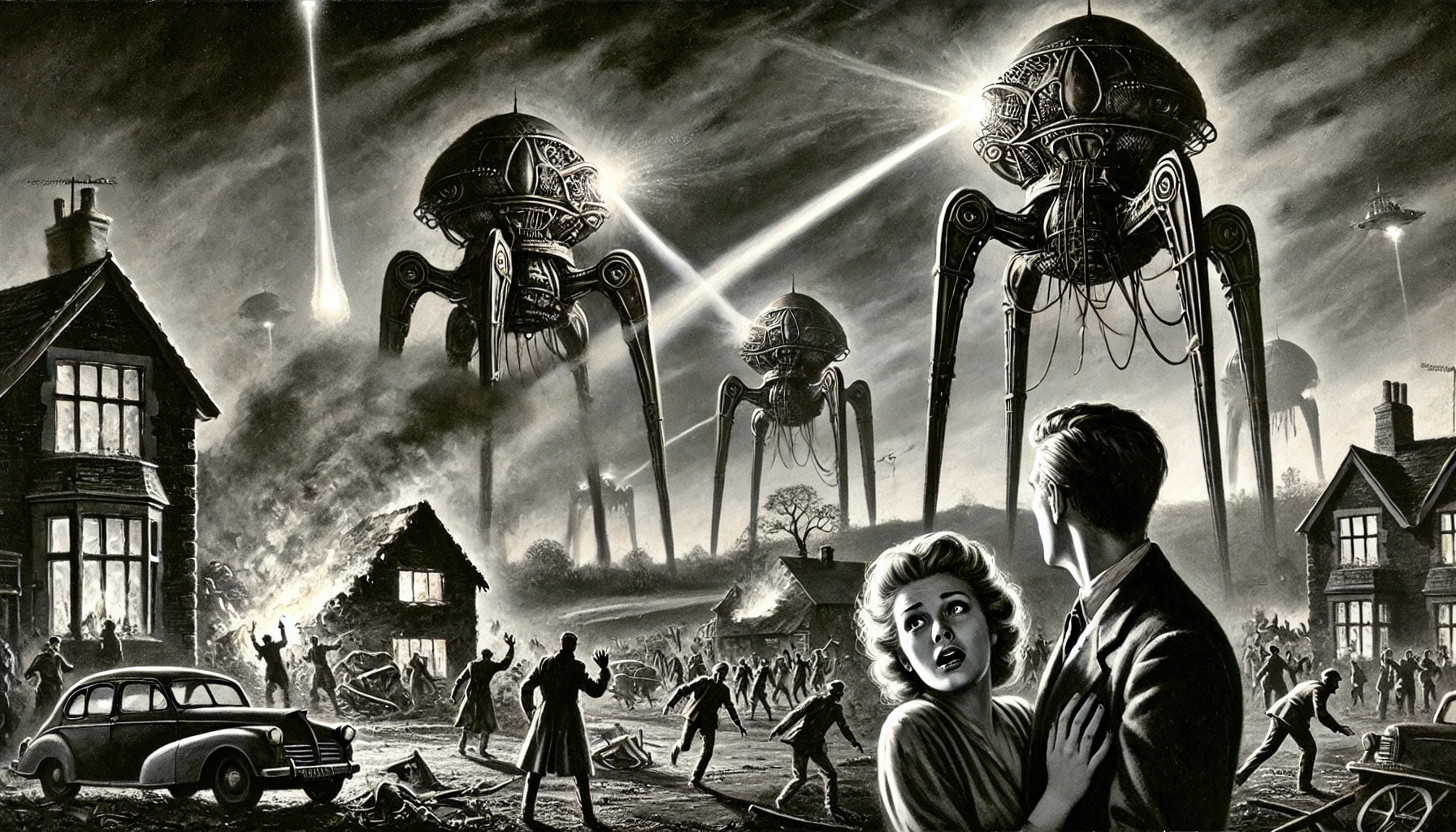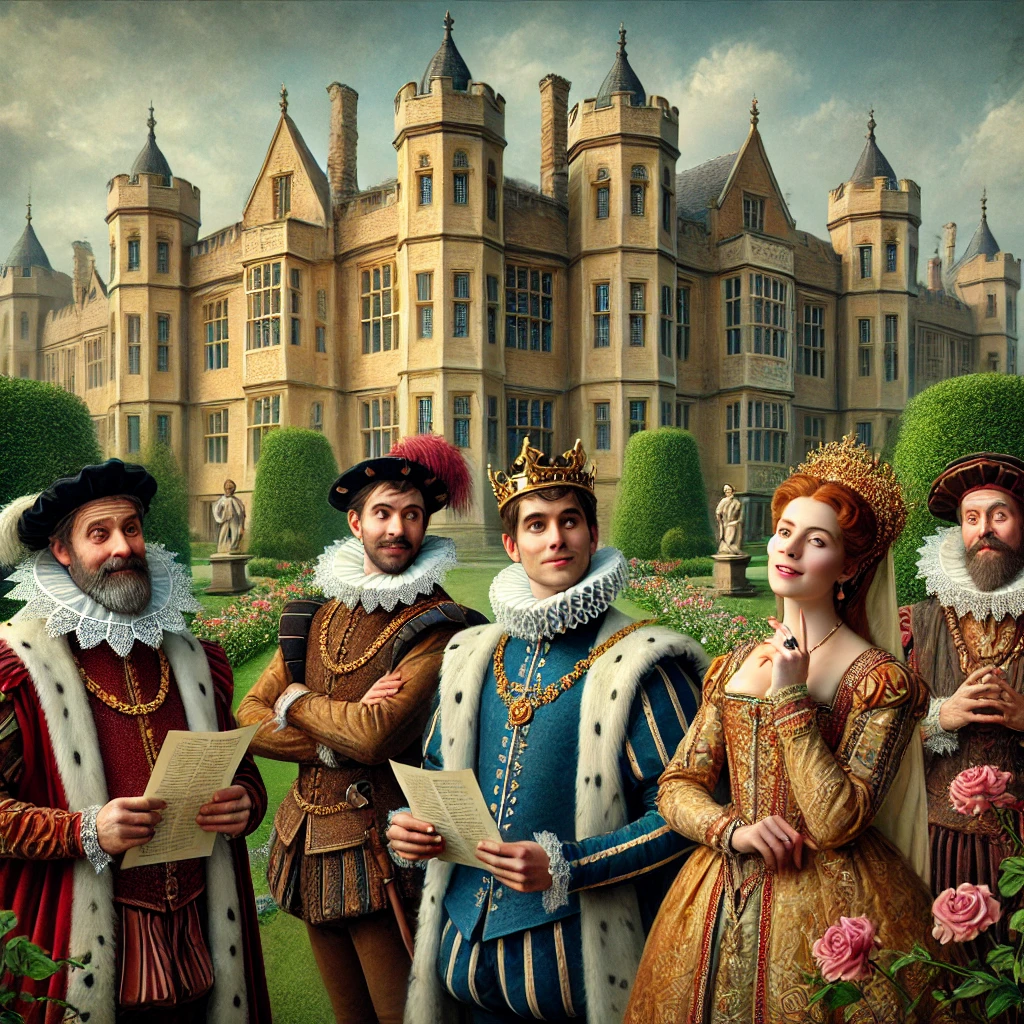“Ann Veronica” by H.G. Wells, published in 1909, is a novel that explores themes of female autonomy and social norms. Set in the early 20th century, it follows the titular character, Ann Veronica Stanley, a young woman who yearns for independence and self-fulfillment in a society that restricts women’s roles to domesticity and subservience. The story captures her rebellion against the constraints imposed by her family and society, detailing her journey towards personal freedom and self-discovery.
Plot Summary
Ann Veronica Stanley was a woman on the edge of rebellion. It was late September, and she had finally reached a breaking point. Sitting alone on the train from London, she resolved to confront her father that very evening, determined to make him understand that she could no longer live under his suffocating control. Ann Veronica had always been a curious, intelligent young woman, but her desire for freedom had grown unbearable. She wanted to learn, to experience life, and to explore the world beyond the limits of her suburban home. And she would do it, no matter what her father said.
Her father, Peter Stanley, was a conservative man, a solicitor with a respectable career, who believed women should remain sheltered and obedient. His ideas about what was proper for a young lady were rigid and unyielding. He had already refused her request to attend the Imperial College of Science, dismissing it as unnecessary and unladylike. Instead, he had insisted that she continue her studies at the local Tredgold Women’s College. Ann Veronica had tolerated this for as long as she could, but now, her father’s latest decree—that she could not attend the Fadden Dance—was the final straw.
As she walked from the station to her house, Ann Veronica rehearsed her argument. She had promised her friends she would attend the dance, and she refused to be treated like a child. But it wasn’t just about the dance. It was about the life she wanted to live—a life filled with adventure, learning, and independence. The sheltered existence her father offered was not enough. When she arrived home, her father’s letter awaited her. In it, he reiterated his forbiddance of the dance, citing her “unsuitable” companions, her inappropriate costume as the Corsair’s bride, and the idea that she would stay overnight at a hotel with her friends. The tone was patronizing, and the letter offered no room for debate. Furious and defiant, Ann Veronica decided she had no choice but to act.
That evening, she confronted her father, but their conversation quickly spiraled into a shouting match. He dismissed her as a naïve girl who knew nothing of the world’s dangers. Ann Veronica, equally stubborn, refused to back down. The argument was not just about the dance—it was about her entire future. Her father believed that as long as she lived under his roof, she would do as he said. Ann Veronica saw no compromise, only control. She stormed out of the room, her mind made up: she would leave home and live life on her own terms.
The next day, she packed her belongings and left the house. Without informing her family, she moved to London, where she rented a small room and set out to begin a life of independence. Her heart was heavy with the knowledge that she had severed ties with her family, but her resolve was stronger. She quickly found work as a student assistant in a biology laboratory, where she hoped to expand her studies. But the path she had chosen was not without difficulties.
In the bustling, unforgiving city of London, Ann Veronica discovered that freedom came at a cost. Money was tight, and her decision to live on her own raised eyebrows among her former friends. Even in the city’s progressive circles, women living independently were viewed with suspicion. She attended lectures, broadened her horizons, and met new people, including Mr. Capes, a charismatic lecturer in biology. He opened her eyes to new ideas about science, society, and art, and for the first time in her life, she felt intellectually stimulated and respected.
Despite her growing independence, Ann Veronica’s situation remained precarious. A friendship with Mr. Ramage, a wealthy man with progressive leanings, became a source of trouble. At first, Ramage offered Ann Veronica financial help, but his generosity soon took on a more predatory tone. He attempted to manipulate her with promises of financial support in exchange for her affections. Realizing that his intentions were far from innocent, Ann Veronica rejected him and narrowly escaped a dangerous situation.
Disillusioned by her experiences, she found herself questioning her ideals of freedom and independence. Was this the cost of living as a free woman—financial insecurity, social ostracism, and the threat of men like Ramage? She struggled to reconcile the reality of her situation with her dreams of an emancipated life. Her thoughts often wandered back to her father’s house, to the security she had left behind, even though it had come with stifling restrictions.
Through it all, Mr. Capes remained a constant figure in her life. Their relationship deepened as they spent more time together, and Ann Veronica found herself drawn to him in ways that went beyond intellectual admiration. Mr. Capes, though married, reciprocated her feelings, and the two entered into a romantic relationship. For Ann Veronica, this love was both liberating and troubling, as it conflicted with her desire for complete independence. Could she be truly free if she gave her heart to a man?
As the months passed, Ann Veronica became increasingly torn between her ideals and the reality of love. She loved Mr. Capes, but she feared that a relationship with him would trap her in another form of dependence. At the same time, she knew that her intellectual and emotional connection with him was unlike anything she had ever experienced.
In the end, Ann Veronica had to make a choice. She realized that her journey toward independence was not about rejecting all forms of connection or love, but about finding balance. She could love Mr. Capes without losing herself. She could carve out a life of intellectual and emotional fulfillment while still holding onto the freedom she had fought so hard to attain.
She returned to her father, not to seek forgiveness or to submit to his authority, but to assert her right to live life on her own terms. The conversation was tense, but for the first time, Mr. Stanley saw his daughter as more than a rebellious child. He saw a woman—strong, intelligent, and capable of making her own decisions. Though their relationship would never be the same, Ann Veronica knew that she had finally achieved the freedom she sought.
Main Characters
Ann Veronica Stanley – The protagonist, a 21-year-old woman dissatisfied with her confined, patriarchal life. She is intelligent, determined, and passionate about her independence, yearning to live on her own terms and make sense of the world through education and personal experiences. Her rebellious nature leads her into conflict with her family and society at large.
Mr. Stanley (Peter Stanley) – Ann Veronica’s controlling and conservative father. He is set in his ways, representing the traditional Edwardian values that restrict women’s freedom. He loves his daughter but is often dismissive of her ambitions, treating her more as a possession than an individual.
Miss Stanley (Aunt) – Ann Veronica’s paternal aunt, a conventional and conservative woman who aligns with Mr. Stanley’s worldview. She believes in the societal norms governing women’s lives and serves as a figure of propriety in the novel.
Teddy Widgett – A neighbor and childhood friend of Ann Veronica. His affections for her are unreciprocated, but his character highlights the romantic and emotional confusion that surrounds her search for independence.
Ramage – An older man who becomes entangled in Ann Veronica’s life as she explores her new freedoms. Ramage’s interactions with Ann Veronica complicate her understanding of personal autonomy and male authority.
Theme
Female Independence and Autonomy – Ann Veronica’s struggle against societal expectations is central to the novel. Her desire for education, financial independence, and control over her life contrasts sharply with the constraints imposed on women during the Edwardian period. Her journey is a reflection of the emerging feminist movement and the broader fight for women’s rights.
Societal Expectations vs. Individual Desire – Wells explores the tension between individual desires and the rigid societal expectations that dictate behavior. Ann Veronica constantly battles the expectations imposed by her father and society, whether it’s in the form of marriage, obedience, or propriety.
The Role of Education – Education serves as a pathway to liberation for Ann Veronica, as she seeks intellectual freedom and personal growth. However, her pursuit of knowledge is often thwarted by the patriarchal belief that higher education is unfeminine and unnecessary for women.
Love and Sexuality – Romantic and sexual freedom is another motif in the novel. Ann Veronica’s exploration of relationships highlights the double standards women face and the limited roles assigned to them as wives, daughters, or lovers. Wells delves into the complexities of these roles and how they affect women’s autonomy.
Rebellion Against Patriarchy – Ann Veronica’s rebellion against her father and the traditional social order serves as a critique of patriarchal authority. Her actions, though sometimes impulsive, are rooted in a desire to escape from the repressive norms governing women’s behavior.
Writing Style and Tone
H.G. Wells employs a straightforward and often didactic writing style in Ann Veronica, which reflects his broader concerns about societal reform and personal freedom. The language is clear and accessible, allowing readers to engage with the social commentary without being burdened by overly ornate prose. Wells’s background as a social commentator and political thinker is evident in the way he structures the narrative to provoke thought about societal constraints on women and the challenges of individual liberty.
Wells uses a combination of realist narrative and subtle irony to critique the limitations placed on women. His tone often shifts from earnest to critical, especially when addressing the characters representing conventional authority, such as Mr. Stanley. Ann Veronica’s internal dialogue is portrayed with sensitivity, reflecting her inner turmoil as she navigates societal expectations and personal desires. Wells imbues the novel with moments of tension and introspection, making the reader acutely aware of the personal stakes involved in Ann Veronica’s quest for freedom.
We hope this summary has sparked your interest and would appreciate you following Celsius 233 on social media:
There’s a treasure trove of other fascinating book summaries waiting for you. Check out our collection of stories that inspire, thrill, and provoke thought, just like this one by checking out the Book Shelf or the Library
Remember, while our summaries capture the essence, they can never replace the full experience of reading the book. If this summary intrigued you, consider diving into the complete story – buy the book and immerse yourself in the author’s original work.
If you want to request a book summary, click here.
When Saurabh is not working/watching football/reading books/traveling, you can reach him via Twitter/X, LinkedIn, or Threads
Restart reading!








